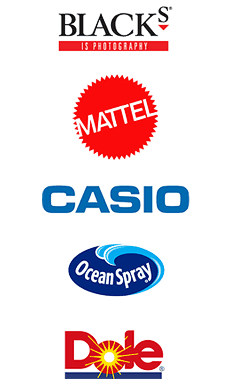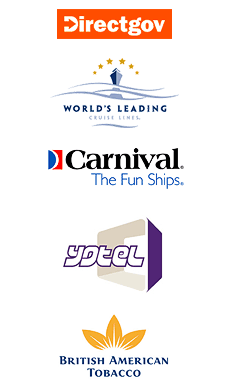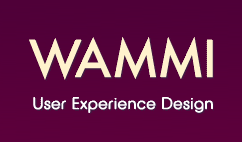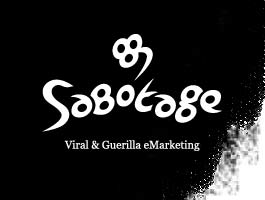
Getting from A to B can be complicated.
WAMMI will make getting to B always easy, seamless and fun.


The services from WAMMI
User Experience Design for any digital interface whether its web based, software design, desktop applications, mobile solutions or even self-service touchscreen kiosks.

Working practices of WAMMI

Overview of services
You need an online system that people use daily allowing them to access information easily. Learning and trusting leads to a purchase and they then become advocates of your brand, telling everyone they know about the wonderful service provided by your system.
This is where WAMMI User Experience Design steps in. WAMMI integrates into your projects from the planning stage, strategic stage, design stage, production stage, all the testing stages and finally your marketing stage to maximise your business objectives.
WAMMI applies the fundementals of user experience design; how is it used, learned and perceived. Not only that but WAMMI believes great user experience is all about the context in which it is used. For example, who will be using the system, how the system will be used and what are the goals of the system. Each of these attributes, and many more besides, are all taken into consideration at every step of a project.

User experience principles
|
Information architecture
All information used in tasks and activities in a structural design with organised labelled elements and details for complex systems. Keeping libraries and arrays
in updated hierarchal order so that the altered adaptions still keep the context for specific actions.
|
 |
|
User-centred design
Creating a system's interface around how a user needs it to work, wants it to work and how the user can actively use the system, instead of forcing the user
to change the way they use interfaces in order stay attune to the a particular system's developers approach.
|
 |
|
Usability
Making the method in a system, clear and easy to use, to obtain specific goals for the user. Meeting the user's perception of a system and the efficiency in which they used it.
|
 |
|
Assessment of existing systems
Easy to understand small steps for a user focusing on one element at a time, rather than trying to understand everything at once or tackling too many tasks in one attempt. These principles are used throughout a project too by breaking down user experience design into separate tasks.
|
 |
|
Assessment of existing systems
All information used in tasks and activities in a structural design with organised labelled elements and details for complex systems. Keeping libraries and arrays
in updated hierarchal order so that the altered adaptions still keep the context for specific actions.
|
 |

The design services
|
Interaction design
What mechanisms can be created to enhance the user experience, such as the unique method of navigation used within the this site. This was designed with the express view of standing out, highlighting what WAMMI can do and selling WAMMI services. As the context is always varied then the interaction should be too, either familiar, easy or fun.
|
 |
|
Intuitive design
A huge part of user experience design is about making predictions. What to expect next and how to deal with it. Remembering how something has behaved and what happened the last time. This will undoubtedly have impact on a system's performance.
|
 |
|
Branded design
This is another key part of user experience design because this will project your business attributes to all users. WAMMI designs precise visuals with finite detail taking onboard all your marketing objectives. The design is the key element that all users will see which is why WAMMI's design skill is effective, thorough and something you can trust.
|
 |

User experience tasks
|
Consider human factors
Everyone uses interactive software differently due to many factors such as the obvious; skill, dexterity and experience. But importantly there is cognitive science, the psychological and anthropological values of individuals to consider.
|
 |
|
Examine the usability of existing assets
What have you been producing and how's it been used and marketed. Who's actually been using it and why. What has their experience been like and what can be improved upon.
|
 |
|
Work and user flows through navigational and system maps
Where will a user will start from, what they will be presented with, influencing the choices they may make and how they will be directed to the end result.
|
 |
|
Use cases and scenarios
What choices does a user make and what are their goals. How does this differ to another type of person. For example the comparisons between a repeat purchaser who has used the system many times and wants only to buy another product, exactly the same as the last one they bought. To, someone who's never used this system and is wanting to find out the best deals and delivery costs for an item someone else recommend to them.
|
 |
|
Specifications and inventory of content
All the requirements a system has to accomplish, all the services to be carried out by the system and the processes that have to happen. This document breaks down all items in categorised sections with in-depth detail so all persons working on the system have all the information they need.
|
 |
|
Wireframes and prototyping
WAMMI storyboards a system or attributes of a system, from pencil sketches to full Adobe Flash interactive prototypes. These are used for analysis and modifications, before system production begins, highlighting both missing actions and actions which are too complex.
|
 |

Overview of work by WAMMI

Who WAMMI works with

Who WAMMI has worked for
 |
|
 |
|
 |
Consumer entertainment
|
|
Consumer products
|
|
Consumer corporate services
|

Case study about a project WAMMI produced for Carnival
Overview of the project
Carnival Cruises is a global cruise company and one of the largest vacation companies in the world. Their portfolio of cruise brands include, P&O Cruises, Cunard Line, Ocean Village, Princess Cruies and Seabourn Cruise. Currently, over 50% of cruise bookings are made online. A high volume of calls to Carnival’s flight department call centre are from passengers asking if there is the facility to reserve their seats on their chartered flight (that runs to and from their cruise locations) - either online or through a call centre representative. At the moment, there is no facility to pre-book flights. It is thought that 25% of passengers booked on a flight will choose to reserve seats.
The administration system and online customer system that WAMMI designed for Carnival Cruises facilitated this demand. WAMMI scoped out all the processes and information needed for the system from the back-end to the front-end, created the prototyping and mapping for all the user tasks for all customers and company staff users. WAMMI designed all the components of the project from the information architecture to the interaction design and re-skinnable branded website.
What WAMMI did was to create a simple to use system, even when there were complex tasks for a user to do (one such task was for an administrator to produce a layout for one of the aircraft flights by having no drawing skills. The layouts had to be detailed and exact as this will be used for the consumer who is of an average age of 65 years and of limited computer usage experience). The system was also light weight, quick and easy to re-skin for different brands. There were lovely little touches to the system like maximising limited screen real estate and allowing the design to be flexible and scale to whatever size content was needed without being cluttered, difficult to understand or bare and empty. WAMMI unified similar tasks throughout the system so users will predict what they need to do and to keep development and production time low which in turns keeps project costs down.
Mapping huge amounts of information

Explaining complex rules for all involved including customers

In-depth wireframes

Flexible, scalable design for re-skinning

Precise pixel perfect design


Get in contact with WAMMI

Please get in touch with WAMMI whether you want to know more about what WAMMI does, examples of previous projects, what WAMMI's costs are and what WAMMI can do for you, or if you just want to meet up and discuss user experience design.

Visit WAMMI directly
michael@wammi.co.uk >
Telephone: +44(0)7703 537523
Knowle Village
Hampshire
View map >

©2009 WAMMI User Experience Design. All rights reserved. Designed and created by michaelings.com

























